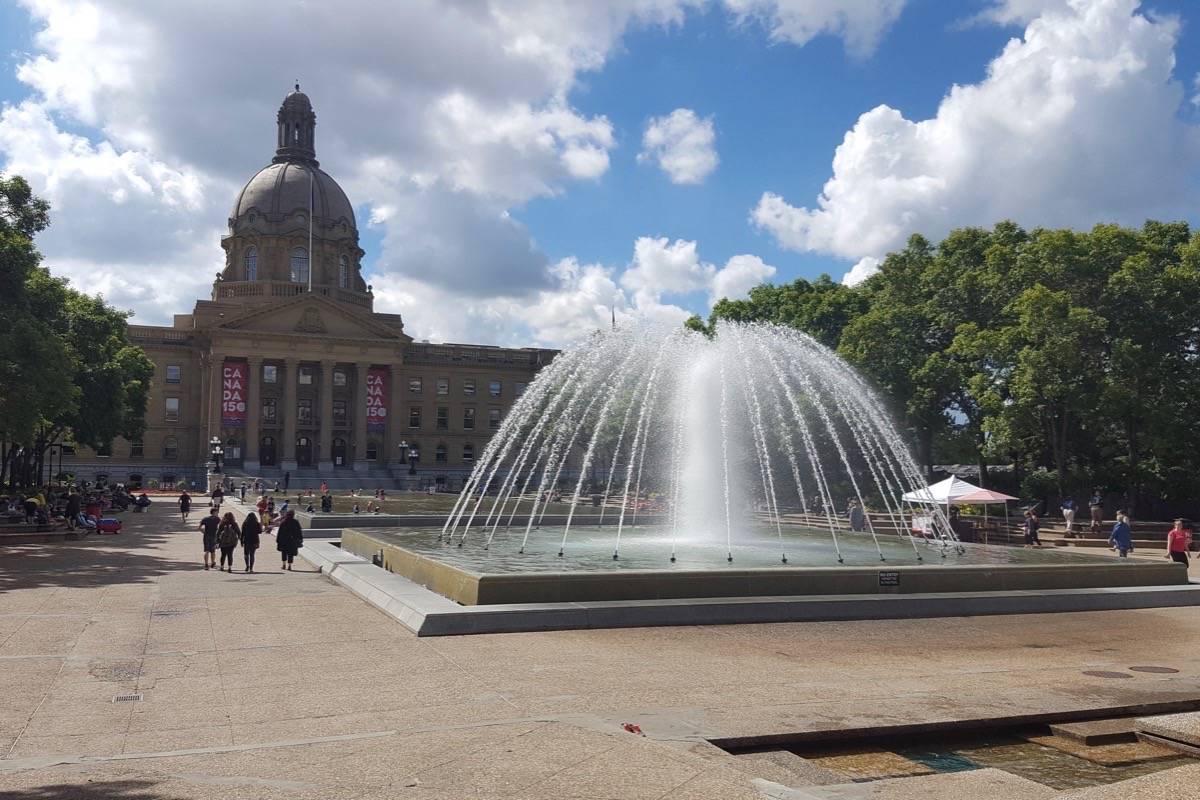The Alberta Government says the 2018 budget is the first step to a balanced budget by the year 2023.
According to a press release by the Province, the budget the money will be invested where it is “needed most, while at the same time eliminating waste, controlling spending and finding efficiencies.”
The path to a balanced budget in the next five years comes at the tail end of one of the worst recessions Alberta has seen.
Minister of Finance, and President of the Treasury Board, Joe Ceci, says Alberta’s economy is looking up.
“Alberta’s economy is creating good, mortgage-paying jobs and Alberta led the country in economic growth last year and is poised to do so again in 2018,” Ceci said.
Alberta’s economy is expected to grow by 2.7 per cent in 2018, according to the federal government and the Conference Board of Canada’s predictions.
The 2018 provincial budget plans to build a more “resilient and diversified” economy.
The government says this will be accomplished through stable, predictable funding, and getting the most value out of resources.
“We will hold the line on spending increases and invest in new opportunities that create good jobs and diversify the economy,” Ceci said.
The budget will diversify the economy by increasing access to capital for entrepreneurs, strengthen the technology sector, attract investment to the petrochemical industry and add more low-cost renewable energy in communities across the province, according to Ceci.
The Alberta Urban Municipalities Association (AUMA) is happy the government’s budget shows a commitment to “ensure the sustainability of Alberta’s municipalities.
“We knew going into this budget that the government was going to have to make some careful and judicious cuts in order to address the deficit,” said Barry Morishita, AUMA president. “We appreciate the government’s restraint in cuts to funding for municipalities, as our local governments are key in providing essential services to Albertans.”
Municipalities’s key source of revenue is the Municipal Sustainable Initiative (MSI). This provides municipalities with capital funding for infrastructure projects, including water and wastewater, roads and sidewalks, parks and recreational facilities, among others.
While the MSI was cut by $150-million, the impact of the cut will be shared by Alberta’s largest cities, Calgary and Edmonton. The cities are expected to receive alternative funding to offset the reduction of the MSI.
“It was great news for us and our members to hear there will be no impact to MSI over the next three years, as this provides some stability for municipalities in developing their capital plans,” said Morishita.
“We are truly making life better and more affordable in Alberta while building an economy for the long haul,” Ceci said.
Highlights of Budget 2018
Diversifying the energy sector
• Investing $1 billion for partial upgrading over eight years beginning in 2019-20, through tools such as loan guarantees and grants, to attract up to $5 billion in private investment, improve pipeline capacity and add value to Alberta energy products while creating thousands of new jobs.
• Generating up to $6 billion in private investment for natural gas processing through $500 million in royalty credits beginning in 2020-21 for a second phase of the extremely successful Petrochemicals Diversification Program.
• Encouraging construction of new extraction facilities with $500 million in loan guarantees and grants for a Petrochemical Feedstock Infrastructure Program.
Diversification across our economy
• Extending the Capital Investment Tax Credit, which already supports more than $1 billion in private-sector capital projects, and the Alberta Investor Tax Credit.
• Launching a $20-million new Interactive Digital Media Tax Credit to attract and retain more tech entrepreneurs.
• Funding 3,000 new post-secondary technology spaces over the next five years and new scholarships to support technology and other emerging sectors like life sciences, clean technology and health innovation.
Protecting vital public services
• Continuing capital investment in health facilities, including the Calgary Cancer Centre and the new Edmonton hospital.
• Supporting the shift to better community-based care by funding hundreds of new continuing care beds.
• Fully funding enrolment growth in the K-12 education system and reducing school fees.
• Extending the post-secondary tuition freeze for the fourth year.
• Creating 4,500 additional affordable child-care spaces through the Early Learning and Child Care Centre Program.
• Reviewing the Persons with Developmental Disabilities Program to ensure it provides the right supports.
Returning to balance
• Reaching practical agreements with labour unions to control costs.
• Continuing the salary freeze on non-union public-sector employees.
• Cutting salaries and eliminating bonuses for some of the highest paid executives of Alberta’s agencies, boards and commissions.
• Keeping the size of the Alberta Public Service flat.
• Keeping health spending growth below population growth plus inflation.
• Dissolving and amalgamating government agencies, boards and commissions.
• Tightly managing discretionary spending across government in areas such as travel, conferences and hospitality.



